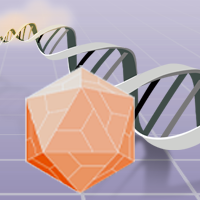Unraveling the origins of human adeno-associated virus 5
Cell & Gene Therapy Insights 2023; 9(4), 265–273
DOI: 10.18609/cgti.2023.085
Adeno-associated viruses (AAVs) are non-pathogenic parvoviruses that have been successfully adapted as gene therapy vectors. Originally discovered as contaminants of adenovirus preparations, and despite decades of research using tissue culture models, the natural biology of AAVs remains largely unknown. Current gene therapy applications predominantly focus on AAV isolates derived from viruses that circulate in humans and non-human primates. However, one historically significant AAV isolate, AAV-5, appears to be of ungulate origin. Importantly, despite its non-primate origin, recombinant AAV-5 vectors have been successfully produced, demonstrating the versatility of ‘trans-encapsidating’ AAV-2 vector genomes with heterologous AAV capsids. In this commentary we discuss the evolutionary and epidemiological characteristics of AAV-5 and explore the potential factors underlying its presence in humans.
